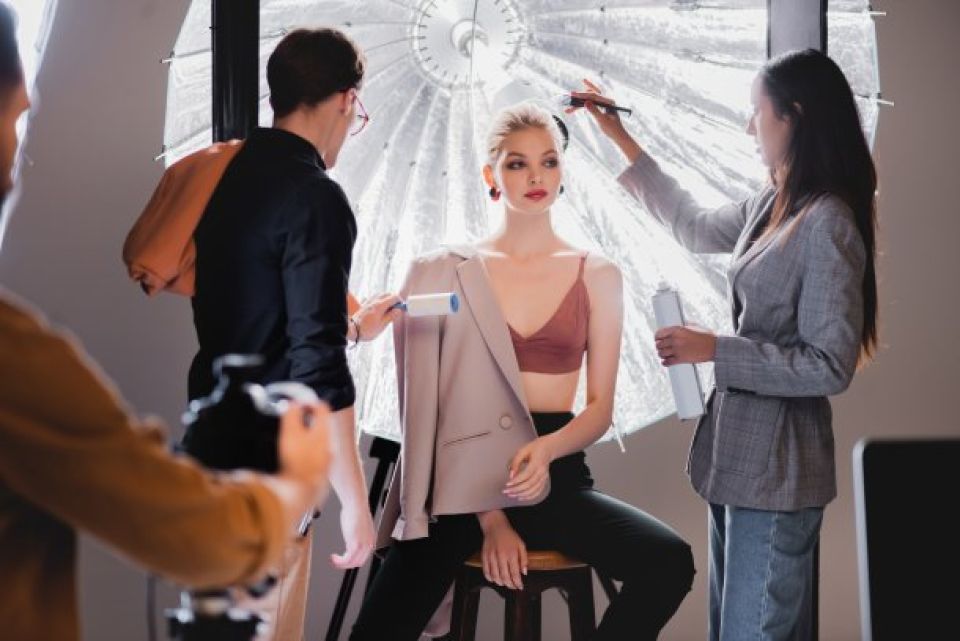How to Get into Fashion Styling

Do you have an eye for fashion and a passion for self-expression through clothing? Then a fashion stylist job could be perfect for you!
This blog will cover everything you need to know to get into fashion styling, including the first steps to take, what a stylist does, and the experience and materials you need to have before applying for roles.
So what does a fashion stylist actually do?
It’s time for some myth-busting! Contrary to popular belief, fashion styling is not just dressing celebrities for runways or movie premiers, but it does still focus on dressing people. Stylists set trends, collab with brands, and essentially use clothing to communicate a concept. It’s about telling a story through fashion and can range from editorial photoshoots to a thematic fashion shoot, to personal styling for real people.
Although clothing is a big part of the process, styling rarely focuses solely on the clothes and is more about the bigger creative surrounding them. Stylists often work with other industry creatives, like musicians and brands, collaborating on the design process. Stylists may work at Artistic Directors on a project, to push the creative vision and be responsible for the aesthetic of an objective.
There are three main areas of Fashion Styling; editorial, commercial and personal styling. But how do these differ?
Editorial styling is the creation of imagery for a magazine photoshoot. You don’t work for a brand but are commissioned by an editor to produce the imagery for a magazine; this is where the majority of stylists build their portfolios.
Commercial styling is created as part of a wider marketing campaign to see a product, including adverts and lookbooks. Nearly all commercial styling opportunities are given to editorial stylists, so understanding fashion editorial styling is essential to building a strong and broad career.
Personal styling is solely about dressing an individual, whether that be helping them shop for core items they might be missing in their wardrobe or dressing a celebrity for a social fashion event, like a fashion show or film premiere.
How do you become a fashion stylist?
To start there are plentiful degrees and courses on fashion styling, from year-long courses to week-long online courses; this experience and knowledge will be invaluable to you against other candidates. But anyone can get a degree, what separates you the most is your point of view, and you need to find it first before anything else.
Finding your opinion and point of view goes beyond just clothes, but looking at the politics, narratives, and identity when creating value. Styling is not a skill in the same way pattern cutting is, but there are a lot of skills that can make you a good stylist, for example, good research skills and communication skills are key to any styling brief. Styling is about transforming a concept and a message into something real and can be a force for social change or rebellion.
After you have found your point of view, you need to focus on building your professional network. According to the University of Arts London, over 80% of job seekers say this has helped them find a styling role. It’s important to be proactive and keep up to date with fashion trends, news, and social media.
Our top tip is if you haven’t already explored models.com, it’s time to. They have a massive digital database of both editorial and commercial shoots, where people can build their networks and work together on briefs. Get your name out there!
Finally, you need to build a strong, and visual, portfolio. At u&i search, our three focus areas are test shoots, assisting, and networking.
Practice yourself. Get your friend and a selection of outfits and have a photoshoot in a good location; don’t overthink it, just get started. These might not make it into your portfolio, but they are a great way to enjoy styling and build your confidence. As these test shoots get more interesting and creative, take that jump and reach out to others to collaborate with. Start by sharing your portfolio with small brands and independent magazines, and the rest will come.
This blog should have helped you with those first steps to get into fashion styling, if you would like to learn more about the candidate process, then get in touch with us today.


